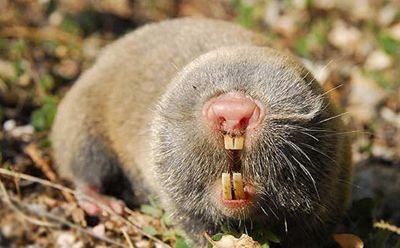
Picture a tiny, burrowing critter that lives under the ground, much like a mix between a mole and a gopher. The zokor is native to East Asia, particularly around Mongolia, China, and Russia. While these animals are known for their tunneling abilities, they often become victims of myths that paint them in a less-than-favorable light. Here, we’ll break down those myths and set the record straight, shining a light on the real characteristics of the zokor.
Myth 1: All Zokors Are Pests
The first misconception many folks have is that all zokors are nothing but garden pests. While it’s true that they dig extensive tunnel systems, leading to the occasional annoyance for gardeners, they actually play a vital role in their ecosystems.
Zokors aerate the soil and promote healthy root growth for plants. Their digging helps to mix organic matter into the soil, improving its fertility. So, instead of vilifying them, think of zokors as nature’s little gardeners, helping your yard thrive. You might not see them often, but their underground work is essential, just like the unsung heroes of any team.
Myth 2: Zokors Are Related to Mice
Another common myth is that zokors are related to mice or rats because of their small size and rodent-like appearance. It’s easy to see why someone might think that. However, the zokor is actually more closely related to a group of mammals called the **mole-rats**.
Zokors belong to the family **Spalacidae**, which includes various burrowing rodents. They have specialized adaptations for a subterranean lifestyle, like strong claws for digging and a unique toothed jaw structure. So next time you hear someone compare zokors to mice, you can confidently say, “Actually, they’ve got a whole different family tree!”
Myth 3: Zokors Are Harmful to Agriculture
You might think that because they dig up soil, zokors are harmful to crops and gardens. This isn’t entirely true. While it’s understandable to worry about crops, zokors contribute positively to agriculture in various ways.
They help decompose organic material, turning it into nutrient-rich compost. Their tunneling also allows air and water to penetrate deeper into the soil, promoting healthier plants. In fact, farmers in certain regions have learned to work with zokors rather than against them. So, while they might appear to be enemies in the battle of the garden, they can actually be allies if you understand their role.
Myth 4: Zokors Live in Large Colonies
Many people believe zokors are social creatures that live in large groups. In reality, zokors are quite solitary. They prefer to dig and establish their own extensive tunnel networks, which can stretch for miles.
These tunneling systems are usually inhabited by a single zokor to minimize competition for food and resources. While there might be some overlap in their tunnels, they generally prefer to maintain their personal space, much like how people enjoy their own cozy corners in a bustling café.
Myth 5: Zokors Are Dangerous to Humans
You might picture a nasty creature ready to attack when you think of zokors. But here’s the thing: zokors are shy animals that pose no threat to humans. They prefer to stay hidden underground, avoiding human interaction whenever possible.
In fact, they don’t even have a nasty bite! If you happen to cross paths with one, it’s more likely to scurry away than confront you. They’re just trying to live their lives like the rest of us – peacefully and quietly.
Myth 6: Zokors Do Not Need Water
A popular myth is that zokors don’t need water because they get moisture from their food. While they are adapted to a dry environment, they still need water to thrive. Zokors often dig to find underground water sources or rely on the moisture in the roots of the plants they consume. Ignoring their need for hydration can lead to health issues just like in other animals.
So, while they’re impressive creatures with some incredible adaptations, they aren’t completely immune to the basic needs of life.
Myth 7: Zokors Are Easy to Domesticate
Finally, there’s the idea that zokors can be easily domesticated. This couldn’t be further from the truth! Zokors are wild animals that have evolved to live in their natural habitats. Their solitary and territorial nature makes them challenging to keep as pets.
Attempting to domesticate a zokor could lead to significant stress for both the animal and the owner. It’s better to appreciate these fascinating creatures in the wild, where they thrive in their burrowing lifestyle.
In conclusion, while the zokor might be an uncommon topic of conversation, understanding the truth about these animals can help us appreciate their role in nature. They aren’t just “pests” but rather important contributors to the ecosystem. By dispelling these myths, we can foster a greater respect for the amazing diversity of life on our planet. Next time you think of zokors, remember the vital work they do beneath the surface!
